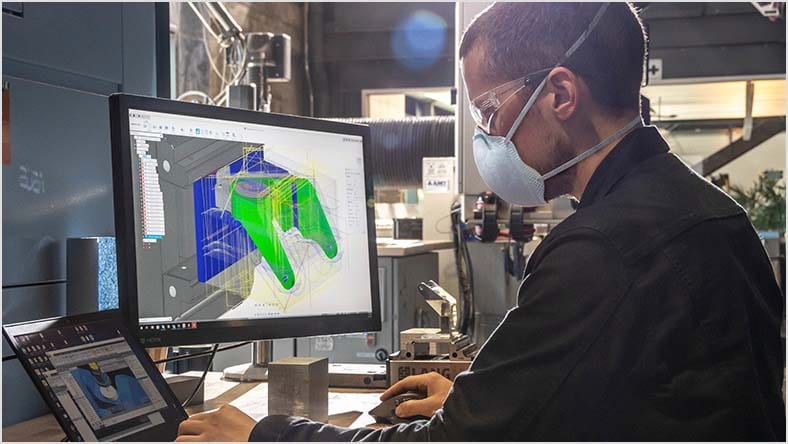& Construction

Integrated BIM tools, including Revit, AutoCAD, and Civil 3D
& Manufacturing

Professional CAD/CAM tools built on Inventor and AutoCAD
Digital transformation begins with convergence, connecting your organization using data while bridging the gap to bring together different disciplines such as CAD, CAM, or CAE and different teams in one product development and manufacturing environment.
Data is the key to connecting your entire manufacturing ecosystem and keeping your business operational. Accessing data via the cloud has become a necessity for collaboration; it’s a critical component that connects end to end, from initial concept to delivery to your customers.
Automation eliminates the delays of manual working. With automation tools, such as generative design and robotics, you can streamline multiple processes and accelerate your product development across all departments that increase innovation and creativity.
Digital transformation is a way for design and manufacturing companies to offer significantly greater value to their customers, employees, and stakeholders by breaking down silos between departments and helping entire organizations work smarter together. It's about using a connected data platform to make better-informed decisions, drive more innovation, increase productivity, and create new business opportunities.
The cloud is a critical component for keeping your global teams connected and your business operational. For more than a decade, Autodesk has been building a manufacturing cloud platform that empowers a virtual workforce
Make better-informed decisions, drive more innovation, and realize new possibilities. Connected data offers actionable insights so people across the entire organization can make better decisions faster.
Digital transformation better connects people, processes, and manufacturing ecosystems to help you achieve more machine uptime and boost output and productivity while reducing waste and re-work.
Quickly use data to check each stage of your product's lifecycle to ensure a quality-controlled process has been approved before moving on to manufacturing, production, distribution, sales, and end use.
Innovate your business by automating your product development processes with tools like generative design that take advantage of artificial intelligence and machine learning.
The Art of the Impossible is a digital transformation podcast for design and manufacturing professionals. The series explores how to leverage technology, processes, and people to make seemingly impossible goals achievable. If you run a design and manufacturing business and want to transcend traditional boundaries, this podcast is for you.
Businesses must be able to deal with change quickly and effectively—changes in product, production, service, and in customer demands and expectations. This eBook explores initiatives, solutions, and technologies required to respond to these challenges.
A family-owned industrial X-ray machine business based near the Northern German town of Lübeck is undergoing a generational handover and investing heavily in the digitalization of processes, artificial intelligence (AI), 3D printing, and sustainable growth.
BAC accelerated their digital transformation seamlessly connecting their design, development, manufacturing, supply chain management, invoicing, and after-sales product management processes.
Image courtesy of Briggs Automotive Company
As the manufacturing industry continues to see rapid change, leading companies find ways to keep pace through digitization. Learn how this powder processing group started their digital transformation and get an inside look at their measured approach to adapting their business for today's digital era.
Check out the latest trends you should watch, including smart products, data automation, and the convergence of manufacturing, construction, and design.
Businesses should adopt smart manufacturing to help streamline processes, increase productivity, stay competitive, and prepare for the future.
Supply-chain vulnerabilities are now impossible to ignore. Across the board, firms are looking to make manufacturing and supply networks more resilient.















